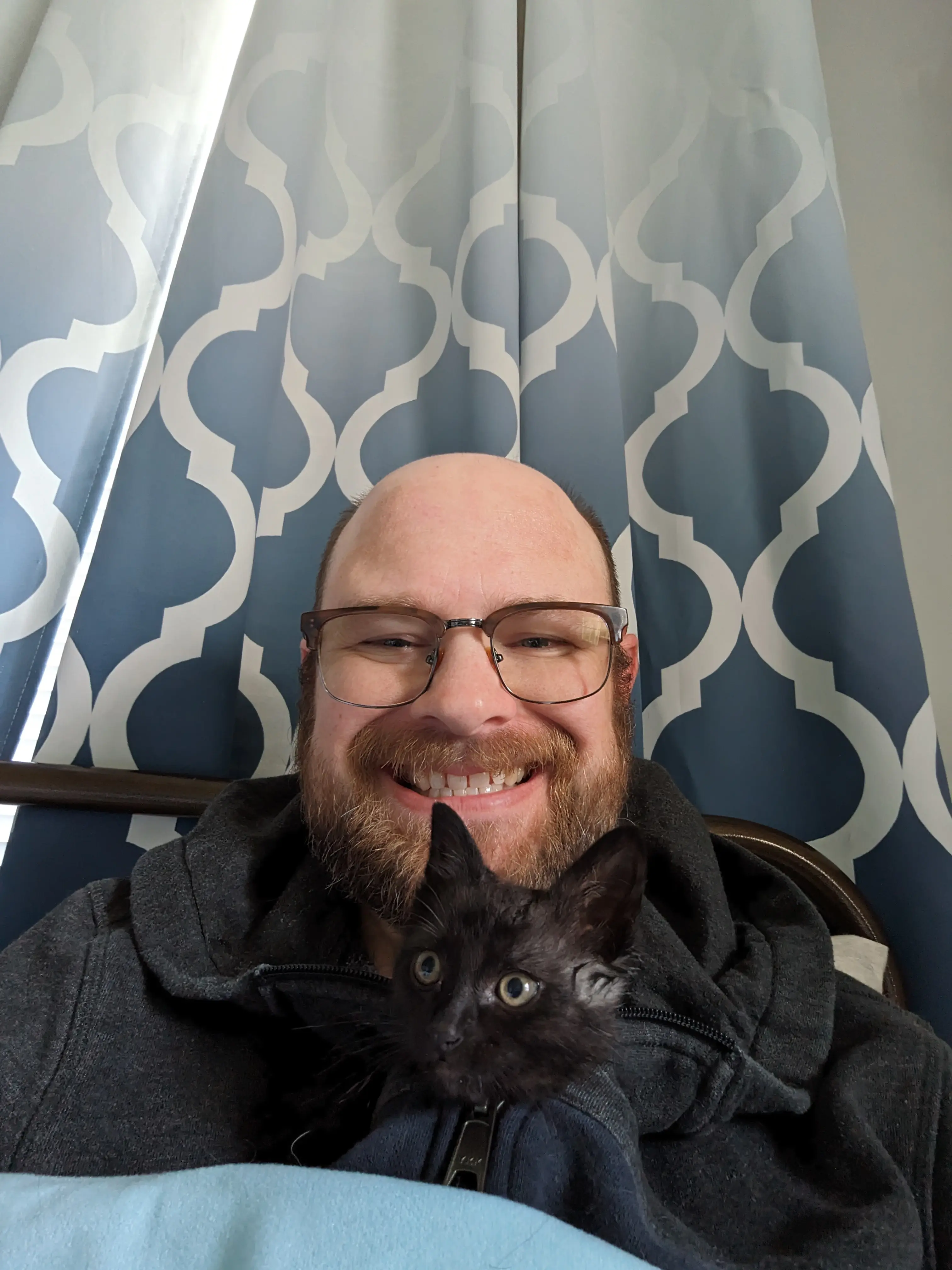nearly 24% of all households are classified as living paycheck to paycheck this year…That share is slightly higher than last year…
Nearly one-third? I question the statistics…I believe it is much higher, as the middle-class is much smaller than it used to be.
All of low-income US households are living paycheck to paycheck. It’s the very definition of low-income.
this seems strange to me. I feel like they are not including people who moved back in with their parents as they are no longer living paycheck to paycheck but can’t afford to have a place of their own or other things like that.
“And we know because we’re making a killing on fees on these low-no-negative balance accounts, not to mention their credit card debt.”
This right here. BofA made over a billion in overdraft/NSF fees. Keeping poor people poor.
Was unfortunate to work as a teller for them after college in a college town no less. The number of customers that came in with an overdrawn account, especially students, was astounding. We always had to explain that they took the largest payment first since it was deemed “most important”, but it was a way to incur the most amount of overdraft fees.
What is it like to not live paycheck to paycheck?
Still plenty stressful. If I lost my job things will get really bad in a few months instead of immediately.
Its not a binary yes/no condition, but instead different levels depending on how not-paycheck-to-paycheck you can get. It gives you the wonderful opportunity of thinking about tomorrow instead of today, next week instead of this week, next month instead of this month, and next year instead of this year.
Especially with today’s cost of living and the challenge of holding good employment this is simply out-of-reach of so many people. However, if its possible for someone to cut back enough to get to the state of having unspent money left over when the next paycheck arrives, its really good path to get on.
It sounds very counter intuitive, but life actually gets less expensive when you’re not constantly broke. It can be simple things like buying a 24 pack of toilet paper at a small fraction of the cost per roll compared to a 4 pack of toilet paper. It can also be as large as being able to afford to buy good tires for your car when your current ones are worn out. The worn out ones you’ve tried to “make due with” may leave you stranded on the side of the road with a flat paying for roadside service or a tow missing work or even worse, having good tires could mean being able to quickly stop the car in an emergency avoiding a collision costing thousands in auto repairs, medical bills, and possible legal costs.
The study, released Tuesday, found that nearly 24% of all households are classified as living paycheck to paycheck this year,
I am surprised and would have expected that number to be higher.
meaning their immediate earnings go toward basic necessities.
Oh, that isn’t the definition I think most people use for the term “paycheck-to-paycheck”. The definition I’m used to is more like: “When all of the income from a paycheck is exhausted inside of the interval for receiving the next paycheck”. That spending could certainly be on basic necessities as the article suggests, but it could also be on things like student loan payments, unexpected medical bills, unnecessary retail consumer goods, sweets/nicotine/alcohol, or automotive expenditures. Perhaps more succinctly, all the money from a paycheck is spent with no savings, and the cycle repeats upon receiving the next paycheck.
Last study I saw earlier this year said like 50 or 60% of everyone. It is way higher. Not sure what they’re up to here.
With that wording, is it not possible that they have savings just that their savings isn’t growing?
In either the article’s definition or mine I don’t think the folks that meet the definitions have savings. Both definitions have and exhaustion of money component before the next paycheck. If they have funds in savings, they haven’t exhausted their funds, so they aren’t really living “paycheck to paycheck”.
I am surprised and would have expected that number to be higher.
Oh, that isn’t the definition I think most people use for the term “paycheck-to-paycheck”.
I think you answered your own question because you’re using a different definition than Bank of America. I have always been a saver, as a kid is squirrel money away in different places, and when I became an adult I kind of kept the same mentality, even when I considered myself as living paycheck to paycheck, I was still putting money aside in different places (401k, HSA, savings, Fidelity, etc). It wasn’t a lot going to any place, but it was consistent at around 10% in total. The way I saw it was that there are plenty of people surviving while earning 10% less than I do, so I just had to make sure I never missed the money. So my definition of living paycheck to paycheck is likely different from yours, if you don’t allow for saving.
So my definition of living paycheck to paycheck is likely different from yours, if you don’t allow for saving.
If you never exhausted your supply of money (as you say you not only had savings, and were even adding to it with unspent money from each paycheck), I’m confused what exactly is “paycheck to paycheck” about your situation then? Is it simply that you receive a paycheck and then at the next pay interval you receive another paycheck? What is your definition?
But I would exhaust the money from my paycheck that was in my checking account, and I had many times where I would also empty my savings when I’d get hit with an unexpected expense.
My point was that even though I was saving money, it wasn’t ever money that I ever saw in my bank account. My 401k was taken from my paycheck and I couldn’t even think about touching that with a lot of effort and expense. I had my direct deposit setup to send most of my check to my checking account, but I always had a small amount going to my savings at a different credit union. My toughest years I was making around $25k a year and I had 5% of my income going to my 401k and 5% going to my savings. My rent, car payment and car insurance would be the first things I paid each month and usually that meant my first 2 weeks of the month were sparse and if I had stopped putting aside that 10% it would have been a little help, but not enough to get through to my next check. So yes, I had access to money, but I was still living paycheck to paycheck because I had strict rules on when I could access that money - and I tried to pay back to my savings anything I took out, when possible.
Would you consider someone adding to their 401k each check to not be living paycheck to paycheck?
Would you consider someone adding to their 401k each check to not be living paycheck to paycheck?
No.
So yes, I had access to money, but I was still living paycheck to paycheck because I had strict rules on when I could access that money - and I tried to pay back to my savings anything I took out, when possible.
Here is the key difference. You are not spending your additional funds because of choices you’ve made to save. Folks living paycheck to paycheck don’t have additional funds to save. All of the paycheck is spent inside of that pay period. At any time you could have chosen to spend your saved money, but you chose not to. What you’re doing what most would call “budgeting” and your choice to not spend your savings are “sticking to your budget”. If you had a dire emergency such as being injured or ill for long enough to miss a paycheck would you have tapped your savings to stay afloat and pay your expenses even though it would have broken your budget? I think most would say “yes”. I know I would. This is the difference. Those living paycheck to paycheck aren’t able to put aside money to create an ever growing savings, as you did.
I very much commend you on your savings and budgeting! You’re on great financial footing with your circumstances and your choices. Nicely done!
During the time I was getting paid around $25k a year I was bringing home around $700 a paycheck (every 2 weeks). Me putting aside 10% between my 401k and my savings meant that I had around $30 every 2 weeks going into savings. I often ran out of available money several days before my next check, and having an additional $30 would have been nice, but would have likely only given me another few days.
And yes, when I had unexpected bills, and later when I lost my job, I did dip into my savings because that’s why I had it, but that 10% want going to be the difference between me living paycheck to paycheck, or not. In fact, the transition to not living that way was a very gradual process.
And yes, when I had unexpected bills, and later when I lost my job, I did dip into my savings because that’s why I had it, but that 10% want going to be the difference between me living paycheck to paycheck, or not.
I’m not sure I understand your logic. If you dipped into your savings, then you clearly thought it was needed in those extreme times and it made a material difference. If it wouldn’t have made a difference, then why did you even dip into your savings?
I didn’t say that the savings didn’t make a difference, I said that having an additional small amount of money available to be each part period wouldn’t have kept me from living paycheck to paycheck. Of course having the savings made a difference when something major happened, that was the whole point.
If you had money, you weren’t living paycheck to paycheck.
An inability to save money is caused by living paycheck to paycheck because you have no excess money.
This is like walking on your knees and telling everyone you don’t have feet. No, dude. You made a decision to save. People living paycheck to paycheck don’t have a choice.
So your view of paycheck to paycheck is likely even smaller than Bank of America’s because you wouldn’t count someone with a 401k?
Ummm, nearly a third? I think they mean nearly a quarter.
Hi, I read the article.
24% of all households are living paycheck to paycheck, while 29% of low-income households are living paycheck to paycheck this year, according to the article.
The title should (imho) read “nearly 3 in 10 low income Americans” instead of nearly a third. But, “nearly a quarter” wouldn’t be right either.
I’m also surprised the number is only 3 in 10…
You read the article? WTH? I mean who does that? What’s wrong with you?
LOL. Ummm, yeah thanks for the clarification. I probably should have done that too before commenting, but you pick and choose right? I stand humbly corrected and beg for mercy.






